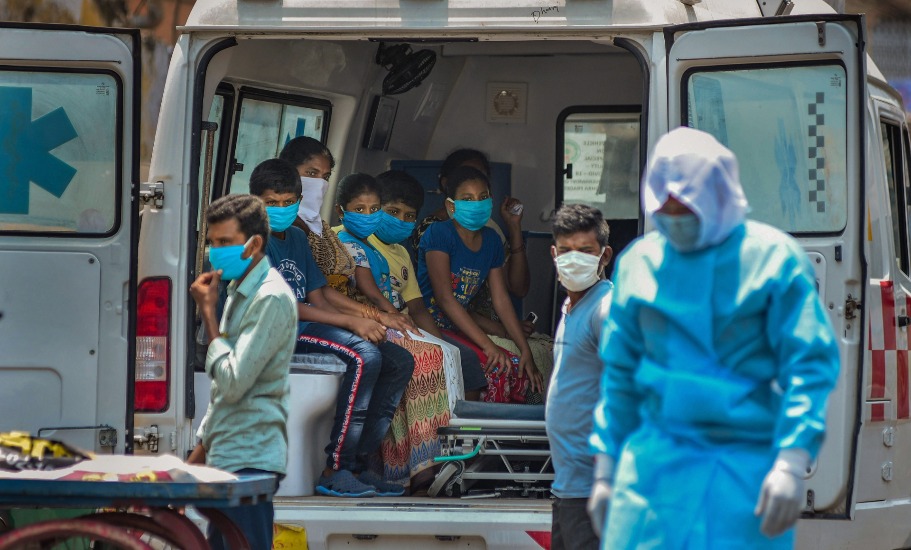
Cases cross 10k, deaths 339: Experts say lockdown helped check spread
As India nears the end of the first 21 days of the nationwide lockdown, many medical experts feel the situation would have been far worse without the unprecedented measure billed as world's biggest shutdown.

As India nears the end of the first 21 days of the nationwide lockdown, recording a spike of more than 10,000 COVID-19 cases and over 320 deaths since March 25, many medical experts feel the situation would have been far worse without the unprecedented measure billed as world’s biggest shutdown.
On Tuesday (April 14), Prime Minister Narendra Modi extended the countrywide lockdown for 19 additional days till May 3 to contain the spread of the pandemic even as the country reported 1,211 new COVID-19 cases and 31 deaths in the last 24 hours, as per the Union health ministry.
Rise in deaths and cases
On March 24, when the prime minister announced a mandatory lockdown of the entire country for three weeks to try and halt the spread of the COVID-19 pandemic, India had nearly 520 confirmed cases of coronavirus and 11 deaths, and after a week into the lockdown the tally of cases reached 1,397 and 35 deaths on March 31, a jump of 878 cases and 24 deaths.
At the end of the two weeks of the lockdown on April 7, the cases had risen to 4,789 confirmed cases with 124 deaths, witnessing a spike of 3,392 cases and 89 deaths, and on Tuesday, the last day of the ongoing 21-day lockdown, the death toll due to the coronavirus stood at 339 with the number of cases soaring to 10,363.
The third and final week of the lockdown saw a jump of 5,574 cases and 215 deaths.
Related news: Explained: All you need to know about COVID-19 tests, hotspots
The government has maintained that if not for the lockdown and other containment measures such as contact tracing and isolation, these numbers would have been sky high and the situation in the country much worse, with the Union ministry asserting that according to a statistical analysis, the number of confirmed cases could have reached 8.2 lakh by April 15 in the absence of a lockdown and other containment measures.
The ministry had earlier also stated that the rate of rise in conformed cases would have been much lower but for the Tablighi Jamaat event at Nizamuddin in New Delhi last month.
The spike in cases in the last few days has also been sharp with a rise of 1,000 cases reported on Saturday and an increase of 918 cases in the next 24 hours.
A record 51 fatalities within 24 hours was reported on Monday, taking the death toll due to coronavirus to 324 and the number of cases in the country climbed to 9,352.
Experts talk
Even as only a detailed study would be able to throw light on the success of the 21-day lockdown that was initially announced, medical experts say it was necessary and India’s situation would have been even more precarious in its absence.
“I think it was a bold step (the first lockdown) and the situation demanded it. Our lockdown came much early compared to say in the US or Italy or other European countries, and you can see the number of cases in those countries, and compare it with ours,” Dr Arvind Kumar, a noted lung surgeon at the Sir Ganga Ram Hospital, told PTI.
“We have made gains in these 21 days, which will give the country time to prepare itself for the future phase of the battle against COVID-19 when it rises further,” he said.
Related news: Mixed result: How chief ministers handled the pandemic challenge
Ravi Shekhar Jha, Senior Consultant and Head of the Department, Pulmonology, Fortis Escorts Faridabad, noted that in the last few days, the reported cases have risen rapidly.
“The doubling time of cases which was 10 days earlier has been reduced to seven days and then to even four days. But, the lockdown has given us gains. Without it, the cases would have been far higher,” Jha told PTI.
Dr Rajesh Chawla, pulmonologist at Apollo Hospital, said the number of cases have risen in the past several days and it will increase even more now.
“But, the 21-day lockdown allowed the government and other stakeholders to prepare themselves to face the surge. We are still on the rising limb of the epidemic curve. But, people learned social distancing, sneezing etiquettes, and that helps in decelerating the spread of the virus,” he said.
Chawla, however, said the virus spread can only be slowed down and the infection cannot be stopped till “we find a vaccine”.
(With inputs from agencies)

